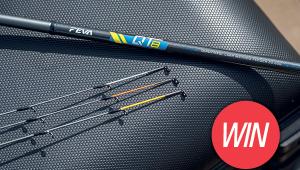Long Pole Fishing - Russ Shipton
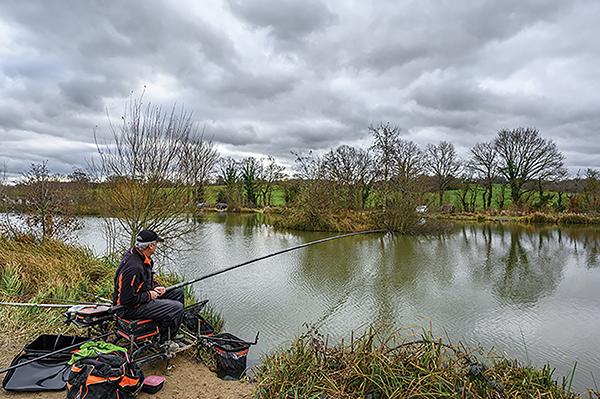
One of my favourite venues during the autumn and winter is Orchard Place Farm, which sits between Royal Tunbridge Wells and Maidstone in Kent. It’s a great commercial fishery and one that I’ve had the pleasure of fishing since it first opened around 10 to 12 years ago.
The weights are often excellent and winning weights on most of the lakes are over 100lb, even in the depths in winter after breaking the ice! However, once it warms up a bit it becomes a bit too good for me personally, with weights in excess of 400lb needed to win and that big-weight bagging doesn’t really appeal me that much.
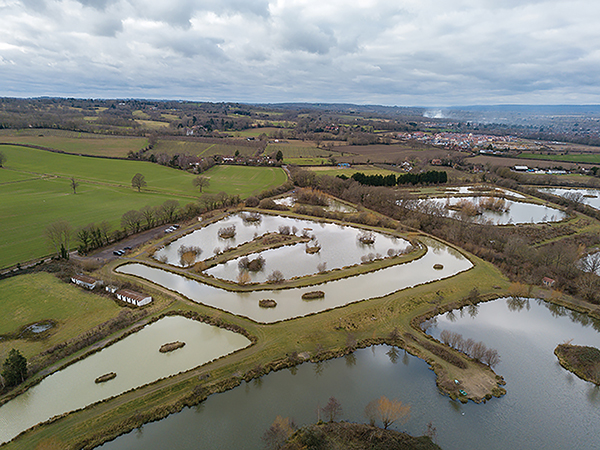
It’s amazing to see how the fishery has changed since we first started fishing here, when the F1s were tiny and averaged about 6oz! Now they go up to 8lb and there are carp too, as well a good head of silver fish like roach and skimmers. You can’t catch enough silver fish to win though, so to do any good you need to set your stall out for the F1s and carp.
Cagey Fish
The problem is, as I’m sure you all know, is that the bigger fish like F1s and carp get, the craftier they become and the harder they are to catch. That means presentation becomes even more important and as we all know, the presentation and accuracy you get with a pole can’t be matched by any other method, including the feeder.
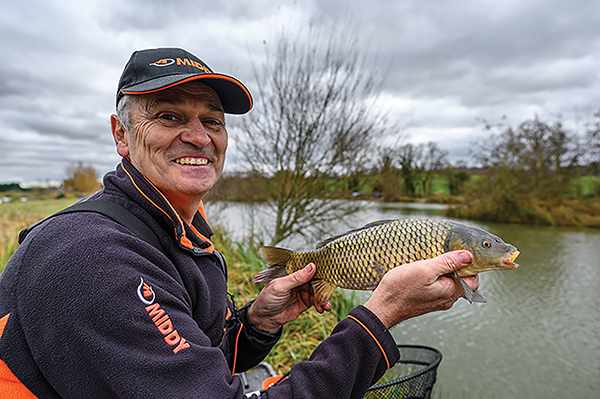
Most of the lakes here have islands and while some are out of reach of the pole, others can be reached if you have the gear and are willing and able to put an extra extension or two on to fish in excess of 16 metres.
Even if you can’t reach an island margin, the fish can often be down the shelf at this time of year and like my peg here on Lake Six today, I can’t reach the island with 18 metres but I can get close enough. I can get to the bottom of the far shelf and that’s a great area to target when it’s cold.
The biggest enemy for anyone fishing a long pole is the wind, so conditions have to be favourable or you’ll be wasting your time. If the wind is too bad you can’t present the bait correctly and that’s the whole point of fishing the long pole in the first place.
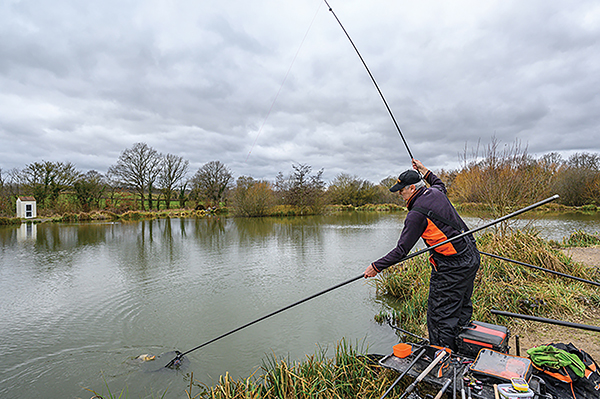
So that’s the first important lesson, if you can’t get your presentation spot on, don’t fish long! If conditions don’t allow it, I will fish a small feeder or a bomb on the same line instead but fortunately today, despite the odd pole-bending gust, the wind is light enough to allow me to fish 18 metres.
We had a 31-pegger on this lake yesterday and I drew the peg to the left of where I’m fishing today and the fish were hugging the island, which they can do at this time of year. I fished 18 metres all day and caught 87lb by dobbing baits like bread along the island margin – something you can’t do on the feeder. Every fish I caught was off the deck and I kept them coming by alternating between bread and maggot on the hook.
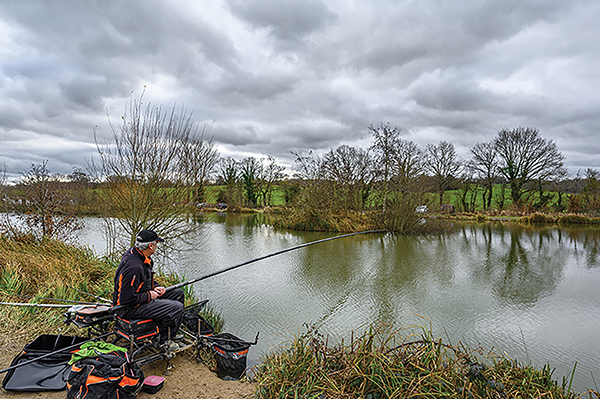
I didn’t want to fish like that today so I’m fishing the peg next door where you can’t quite reach the island with a pole, so I’m going to fish more conventional rigs and feed more conventionally (although very sparingly) to show you my long pole approach.
Top Advice
The first tip I can give you, which sounds obvious, is to make sure you’ve got a pole that you can fish at lengths in excess of 16 metres. What you need is a very good model at 16 metres, mine is the excellent Middy XZ65, and I’ve got a further extension and a mini butt I can add to the 16.5m section to take me to up to 18 metres.

As good as the XZ65 is at 16.5 metres, it’s going to lose much of the balance and rigidity when you begin to add extra sections and any top-of-the-range pole will also suffer greatly when you do this. However, it’s still fishable and stiff enough to be able to use short rigs and feed bait via a small pot, as well as being responsive enough to set the hook when I lift the pole after getting a bite. So, unless your pole is very good at 16 metres, don’t even attempt to fish longer lengths because it will be very, very difficult!
The next obstacle to overcome is how to get the pole out to 18 metres! It’s not easy and requires a completely different technique compared to fishing a ‘shorter’ long pole of 13 or 14 metres. The first thing you need are pole rollers and although I’m using two today, I will quite often use three to keep everything as smooth as possible. If you can use three rollers do it, because it will make your life so much easier.
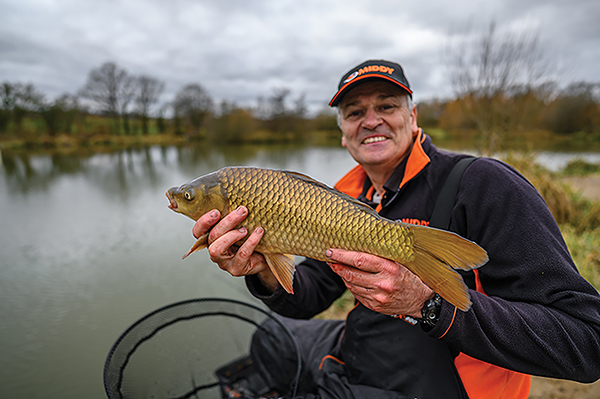
Because I’ve only got two rollers today, I’m having to break the pole down at the No6 section as well as break down again to the top kit so I can net fish. With three rollers you can support enough of the pole so you only need to break down sections once.
Taking The Strain
Once the pole is off the rollers when you’re shipping out, you then need to take the strain and deal with all the weight of the pole and continue to ship out for the last two or three metres. I’ve found by far the best way of doing this to prevent the tip bouncing round all over the place, is to press down on the butt sections as I slide them over my thighs.
With my box level and my legs at right angles, my thighs are flat so I can easily apply the downward pressure required to keep the pole tip out of the water and slide the pole sections out at the same time. It does take a bit of practice but if you’ve got your rollers and seatbox set up correctly it will make your life a lot easier.
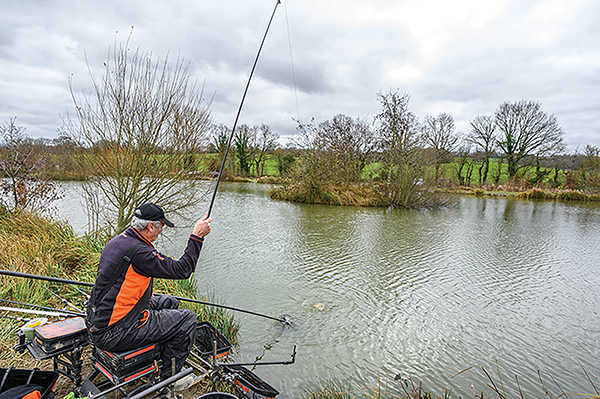
Another good tip is to keep your hands as dry as possible if you can, I’ve seen so many anglers struggle with friction because their hands are wet and the pole sections are dry, creating that wincing screeching sound! However, if you press down on the sections like I do rather than try to slide them through your hands, you won’t have that problem.
Once the pole is fully shipped out you’ve got to hold it steady and be ready for a bite when it comes. Let’s not kid ourselves, any 18m pole is going to be heavy and what I like to do to make holding it more comfortable is to lean back, which acts as a counterbalance that I find makes it easier for me.
I like to hold the pole across my thighs, as opposed to using a bump bar, because I’ve got more control and can react quicker to bites. I often lift my left leg when I strike, which helps to gently lift the pole and set the hook.
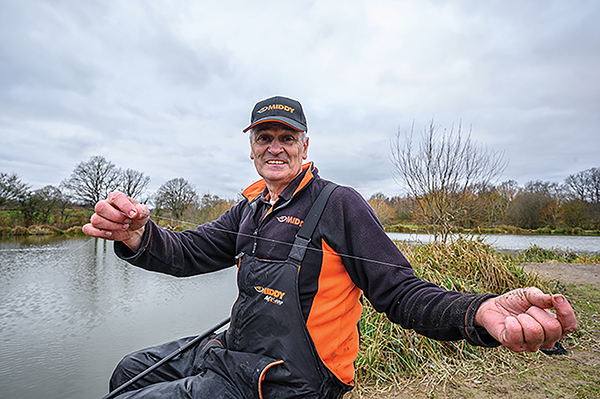
Make Sure It Stays On
That brings me on to my next tip. You must use a hook bait that will stay on the hook if you miss a bite! The obvious example of what not to use is an expander, because they will come off on the strike if you miss a bite and it’s a lot of time and effort to ship back in and out again if you need to rebait all the time!
Here at Orchard Place Farm maggot is the bait at the moment and maggots are ideal for fishing at 18 metres. Obviously if small fish are a problem on the venue you fish you might have to use a banded hard pellet or a grain of corn, but whatever it is it must stay on the hook if you miss a bite.
As I mentioned earlier, presentation is the reason for fishing this long and in this swim I’ve got six feet of water at 18 metres and to trick those cagey fish I like to fish as light as possible with 4x12 or even 4x10 rigs if conditions allow. I’ll often shot these with No11s spread evenly down the line or, like today, because there is some breeze, I’ve positioned my No11s in a small bulk with three droppers below.
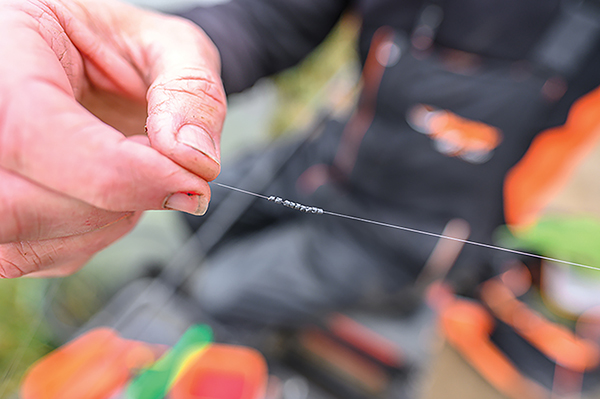
With light rigs it’s even more important to keep that pole tip still and the best and easiest way to do this is to fish a longer lash than you would use with a shorter, more controllable length of pole. Two to three feet between the float and pole tip is ideal and this will also be of benefit when shipping in and out as the rig is less likely to wrap around the tip, causing tangles. I also use a small back shot, which helps with presentation when there’s a breeze.
Presentation Is Key
It’s been quite tricky at times today with presentation and when I’ve been able to get it right I’ve had bites and caught fish. What’s very noticeable on this venue at present is the lack of fish that are being caught short. In previous years it’s been possible to loose feed a close line out of your hand and catch there late on, but this year it’s been very difficult to catch on that line, making the long pole even more important.
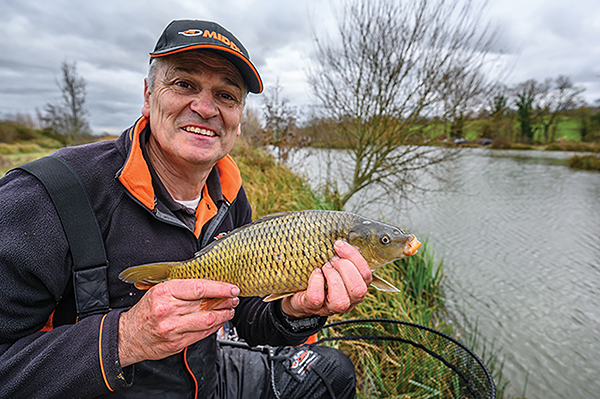
I’ve fed very carefully with a pole pot and a tiny bit of groundbait and maggots, just enough to set a trap and get a fish interested, and although I’ve had to wait for bites for most of the session, the fish have responded. As is often the case at this time of year, the last hour was much better as they tend to feed a lot more confidently later in the day and I managed to put a good net together when I added the late run of fish to the ones I had to really work hard for earlier in the session.
Presentation has without doubt been the key to catching, especially earlier in the session, and that’s why it’s worth getting to grips with fishing your pole in excess of 16 metres. It’s not for everyone and many of you would probably elect to fish a feeder, bomb or even a waggler instead.
But, if the conditions are right and you’ve got the gear to do it, it can be unbeatable because when cagey fish are the target, the presentation and accuracy you get can’t be beaten.
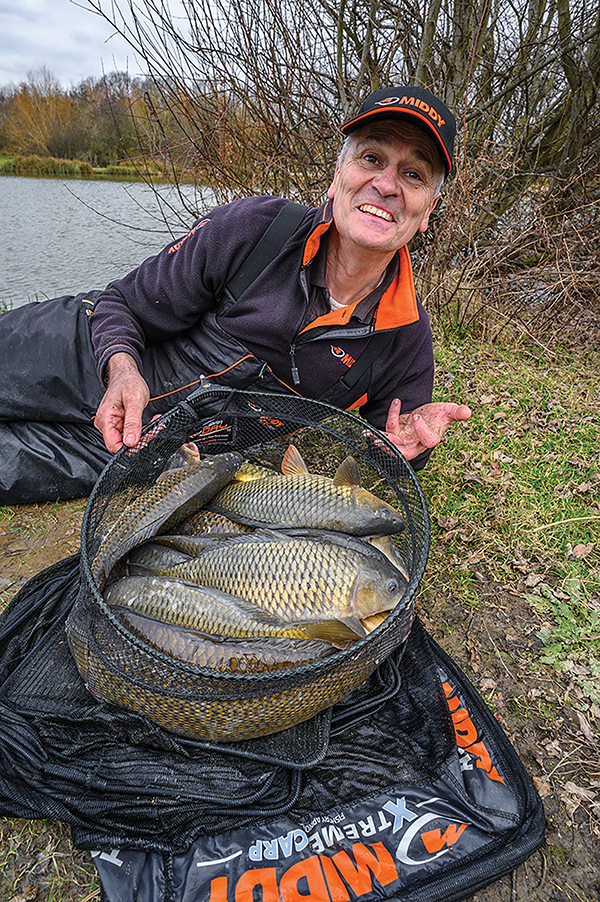
- Log in or register to post comments










